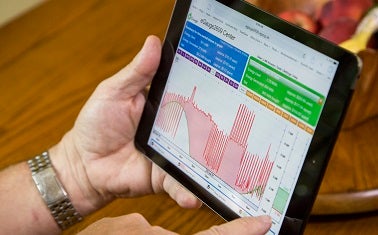 Many American households and businesses saw energy costs soar this summer with July being the hottest month in Earth’s hottest year on record.
Many American households and businesses saw energy costs soar this summer with July being the hottest month in Earth’s hottest year on record.
Utilities rely on “peaker plants” during these record-setting heat waves to avoid blackouts. Such plants are more expensive and often more polluting to operate, and utilities pass the higher costs straight on to their customers.
Fortunately, this energy equation is changing. Innovative pricing and smart energy systems are gradually taking hold across the United States, already allowing homes and businesses to save energy and cut costs. It’s just the beginning of what I call our next energy revolution.
Here are three technologies on the market today that are fueling this trend:
1) Smart electricity pricing
Right now, most utility customers pay the same price for electricity throughout the day. But this does not reflect its true cost, which actually fluctuates by season and time of day.
By switching our energy system to time-of-use pricing, which encourages people to shift their energy use to times of day when electricity is cheaper, we can all start saving on our electricity bills – and avoid the need for dirty peaker plants.
In fact, a new study by the Rocky Mountain Institute finds that customers can cut their electricity bills by up to 40 percent with rates and technologies that exist today.
California is leading the way with these innovative pricing schemes and plans to roll out pilot projects across the state next summer. Similar forms of smart pricing have been successfully implemented in various other states, including Oklahoma, Illinois and Maryland.
2) Home energy management
Smart thermostats such as the Nest are key to the success of smart electricity pricing. By programming these thermostats to increase a couple of degrees during the hottest and most expensive part of the day, for example, customers can better manage their energy use to take advantage of “off-peak” electricity prices.
Even if a utility doesn’t yet offer time-of-use pricing, these little devices can help shave electricity use for customers anywhere. Combined with sophisticated energy management mobile apps, home energy management technologies and smart appliances are improving customer control of energy use and bills.
3) Reliable energy storage
Home energy storage is an emerging technology, but it’s advancing quickly. This year, Tesla introduced a new wall-mounted, home energy storage unit that has been called a game changer.
This new technology has the potential to ease stress on the electric grid by storing electricity produced when demand is low for use when demand is high. It has been so popular that the company already sold all of the stationary batteries it can produce in 2016.
Forward-thinking companies such as California’s Pacific Gas & Electric Company are now piloting new battery energy storage technologies to determine how effectively they can provide a variety of grid services, including the integration of intermittent renewable generation from solar and wind.
Illinois is also moving forward with with energy storage, and look for other states to follow.
A living laboratory
While some of these technologies are new and developing, some have been around for some time and remain underutilized.
Although 65 million American households already have access to smart pricing, for example, only 4 million have signed up. (To find out if you’re among the 61 million eligible for smart electricity pricing, call your utility today.)
Technology can keep our electricity usage stable and energy costs low – but only if implemented ambitiously, and widely available.
A living laboratory for smarter energy, right here in Texas, points the way.
This post originally appeared on our EDF Voices blog.










One Comment
Jim, “keeping energy costs in check” is marketing-speak for cost shifting the price of renewable energy to the people least able to afford it. You seem surprised that
Although 65 million American households already have access to smart pricing, for example, only 4 million have signed up.
Why would anyone want to do their laundry late at night, or turn off their air conditioning in the middle of the day, just to keep electricity costs where they are now? The only takers are likely the 4 million least able to afford renewable energy, which has driven California rates up 26% in the last ten years.
Antinuclear zealotry from organizations like yours (EDF), Amory Lovins (Rocky Mountain Institute), and Natural Resources Defense Council (NRDC) has resulted in the closure of one of the country’s most productive clean power plants, San Onofre Nuclear Generating Station. With decommissioning, it will cost California ratepayers $14 billion, and will result in 8 million extra tons of CO2 emissions coming from 1.8 gigawatts of the new “peaker” plants you decry.
As much as I can understand EDF’s attempt to shift responsibility for its atrocious policy mistakes, what will keep energy costs in check – and protect the environment – is ending the charade that solar panels and wind turbines will ever diminish the role of fossil fuels in American electricity generation.